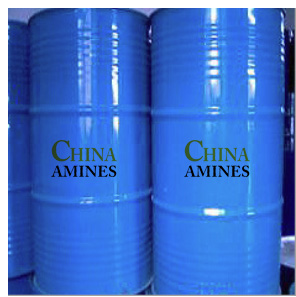1. Chemical Structure and Properties
Molecular Formula: C₁₀H₂₂O₄
Structural Formula:
CH₃O[CH₂CH(CH₃)O]₃H
A branched glycol ether composed of three propylene oxide units linked to a methyl ether group.
Physical Properties:
Appearance: Clear, colorless liquid with a mild ether-like odor.
Boiling Point: 242–245°C; Density: 0.97 g/cm³; Vapor Pressure:<0.01 mmHg at 25°C.
Solubility: Fully miscible with water, alcohols, and most organic solvents.
Chemical Properties:
Hydrophilic-Lipophilic Balance (HLB): ~4.5, balancing polar and non-polar solvency.
Thermal Stability: Stable up to 200°C; decomposes above 300°C into aldehydes and CO.
Reactivity: Resistant to hydrolysis under neutral conditions; reacts with strong acids/bases.
2. Industrial Applications
Coatings & Inks:
Coalescing Agent: Enhances film formation in waterborne paints and latex coatings.
Solvent: Reduces viscosity in UV-curable inks for improved printability.
Cleaning Products:
Industrial Degreaser: Effective in removing oils, greases, and resins from metal surfaces.
Personal Care:
Cosmetic Solvent: Carrier for fragrances and active ingredients in lotions and creams.
Chemical Synthesis:
Intermediate: Produces plasticizers, lubricants, and surfactants.
3. Safety and Toxicology
Health Hazards:
Acute Exposure:
Skin Contact: Mild irritation (rabbit skin LD₅₀: >2,000 mg/kg).
Inhalation (≥100 ppm): Respiratory irritation (TLV-TWA: 50 ppm).
Ingestion: Low toxicity (oral LD₅₀ rat: 3,500 mg/kg).
Chronic Effects:
Reproductive Toxicity: No evidence of teratogenicity (OECD 421/422 compliant).
Organ Toxicity: Negligible hepatotoxicity in subchronic rodent studies.
Protection Measures:
PPE: Nitrile gloves, safety goggles, and general ventilation.
Storage: Stable in HDPE containers; avoid prolonged exposure to light and heat.
4. Environmental and Regulatory Compliance
Environmental Impact:
Aquatic Toxicity: LC₅₀ (fish, 96h): >100 mg/L; EC₅₀ (daphnia): >50 mg/L.
Biodegradability: Readily biodegradable (OECD 301F: >70% in 28 days).
Persistence: Low bioaccumulation potential (log Kow: 0.9).
Regulatory Frameworks:
EU:
REACH: Registered with no SVHC listing; CLP classification Eye Irrit. 2 (H319).
USA:
EPA: Exempt from VOC status under 40 CFR 51.100(s)(1); listed on TSCA Inventory.
China:
GB 13690-2009: Classified as General Chemical.
Transport:
UN Number: Non-hazardous; no special transport requirements.
5. Case Studies and Application Insights
Case 1: Waterborne Architectural Paints (AkzoNobel, 2023):
Application: TPM (5–8% w/w) improved open time and leveling in low-VOC paints.
Result: Achieved 20% faster drying time vs. ethylene glycol-based formulations.
Case 2: Semiconductor Wafer Cleaning (TSMC, 2022):
Process: Replaced NMP with TPM in photoresist stripping for 3nm node chips.
Performance: Reduced solvent waste by 30% while maintaining stripping efficiency.
Comparative Analysis:
TPM vs. Propylene Glycol Monomethyl Ether (PM):
Pros: Higher boiling point (245°C vs. 120°C), lower volatility, and better biodegradability.
Cons: Higher viscosity (15 mPa·s vs. 5 mPa·s).
Specifications:
Tripropylene Glycol Monomethyl Ether is a clear, colorless, low-volatility solvent (≥99% purity) with a mild ether odor, boiling point ~250 °C, density ~1.03 g/cm³, fully miscible with water and most organic solvents, ideal as a coalescing agent and high-boiling solvent in coatings, inks, and cleaners.


